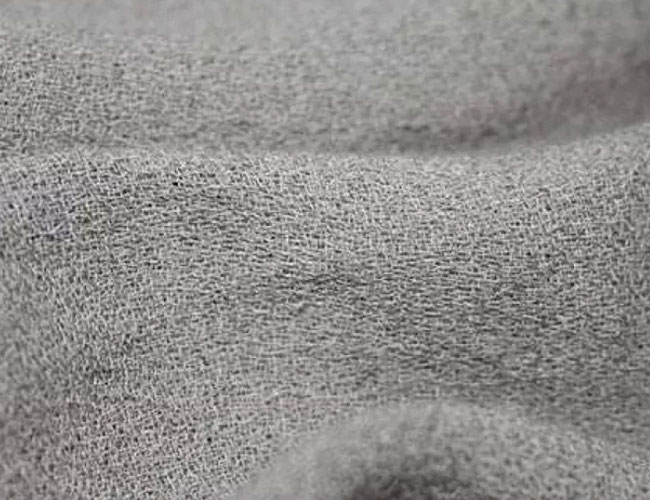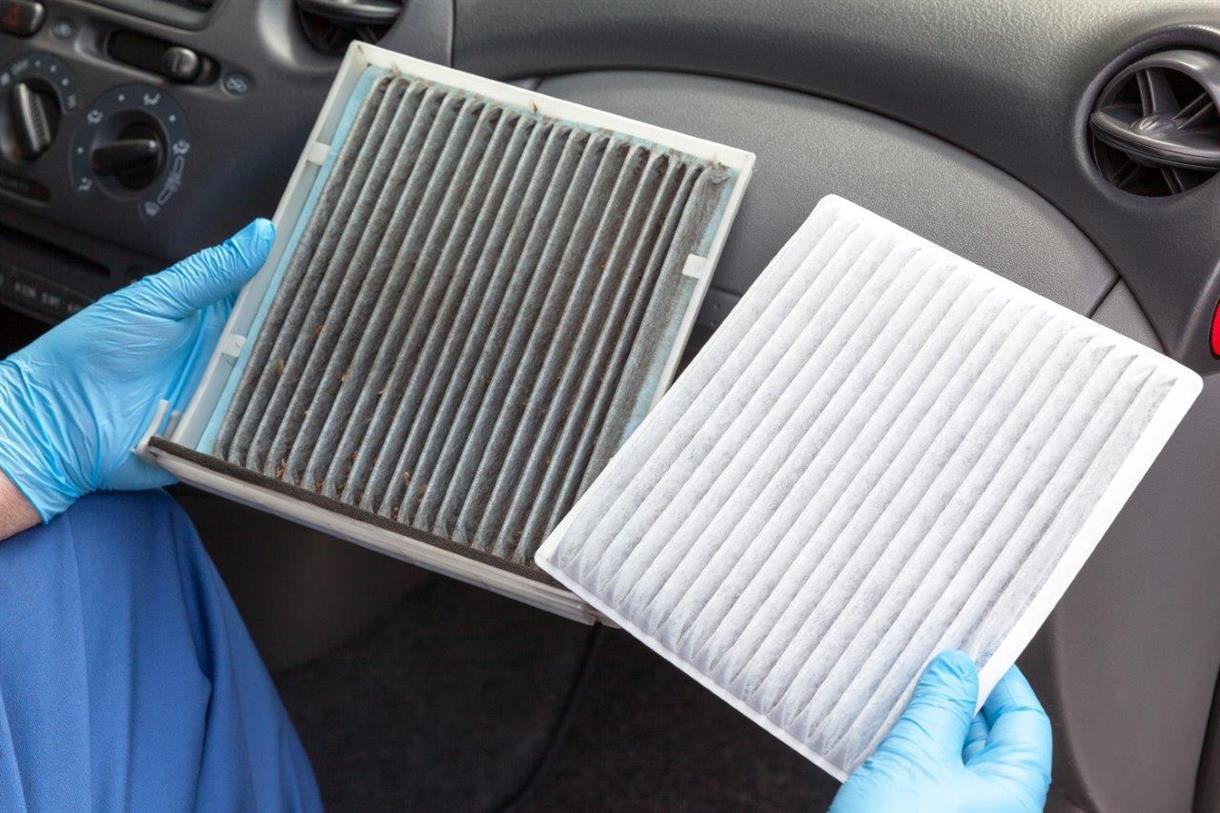
Crepe fabric is a kind of silk, silk or cotton and other kinds of fibers woven into the light fabric, with a tightly fibrous yarn, or caustic soda printing, or weaving with different tension, or embossing methods to make the silk surface crepe. Is the surface showing crepe effect, light texture of silk fabric called crepe.
Crepe fabric is a common fabric, also known as crepe de chine or crepe satin. It is usually made from silk, polyester or blended fibers. crepe fabric is characterized by a lustrous and smooth feel, while also being soft, light and having a certain drape. This fabric is often used to make fine women's clothing, dresses, skirts, wedding dresses and decorative items.
Crepe fabric has many different variants, including printed crepe fabric, silk crepe fabric, banana crepe fabric, butter crepe fabric and so on. Each variant has its own specific texture and appearance. crepe fabric is often used for garments that require flow and shine or crepe fabric saree, which has a high texture and visual effect.
Crepe fabric can be natural or synthetic.
In terms of natural fibers, silk is the most common crepe fabric material. Silk is a natural protein fiber made from silk or wild silk fibers. It has a lustrous, soft and drapey feel, so it is often used to make fine women's clothing and decorative items.
On the other hand, crepe fabric can also be made from synthetic fibers, such as polyester. Polyester crepe fabric has a similar look and feel to silk, but it is manufactured through a chemical process of man-made fibers.
1. Luster and smoothness: crepe fabric has the luster of natural or synthetic fiber, which makes the fabric look gorgeous and noble.
2. Soft and comfortable: crepe fabrics are usually soft, comfortable and very good to touch, with good touch and texture.
3. Drape: crepe fabric has good drape, which can show the sense of flow and high-end, making the garment or decorations look more beautiful.
4. Good moisture absorption: natural fiber crepe fabric such as silk has a certain degree of moisture absorption, which can keep the skin relatively dry and comfortable.
5. Plasticity: crepe fabric is relatively soft, suitable for cutting, sewing and shaping treatment, easy to make a streamlined clothing design.
6. Diversity: crepe fabric can use different textile technology and dyeing technique to achieve various textures, patterns and color effects, so that designers can create a rich variety of clothing styles.
Yes, crepe fabrics are perfect for summer. Since there exists a large number of crepe fabric types, finding the one that best suits you and your skin in the summer will be fairly simple.
Crepe fabric is quite thin so it won't help generate heat for your body, which is a good feature for summer. In fact, it is said to have very low heat resistance (if it is blended with silk), which basically means it won't help conduct or generate any heat.
Crepe fabrics offer some breathability, comfort and lightness when used in the summer, but the choice should be based on the nature of the fabric and personal preference. It is recommended to choose crepe fabric with better breathability and relatively thin models, and to choose the right style of clothing according to the weather conditions and personal body feeling.
In addition, pay attention to avoid excessive rubbing and keep the clothes neat and tidy when maintaining, which will help to keep the beauty and comfort of crepe fabric. Therefore, wearing clothes made up of crepe fabric is a very considerable choice in the hot summer days.
Rayon and crepe are two different fabrics with different characteristics and uses, so it's impossible to simply say which is better. Choosing the right fabric depends on your personal preference, usage environment and needs.
Crepe usually refers to silk fabrics, which are made from natural silk or wild silk fibers and have a lustrous, soft, and drapey feel. Silk crepe is often used to make fine women's clothing, dresses and wedding gowns and other fashion boutiques, giving a gorgeous, regal look. The benefits of natural silk include comfort, moisture absorption, and a beautiful luster.
Rayon is made from chemically synthesized fibers, commonly polyester (e.g. polyester) and nylon (e.g. nylon). rayon fabrics often have good durability, wrinkle resistance and ease of care. They can also have a lustrous and soft appearance, but they may have a slightly different sheen and feel compared to natural silk.
1. Style and use: crepe is often used in high fashion and special occasions, so if you are looking for an upscale feel and elegant style, you may be better off with crepe, while rayon is suitable for everyday wear, casual wear or occasions that require more durability and easy care properties.
2. Preference and comfort: Natural silk has a natural moisture-wicking and comfortable feel, and some people may prefer its unique texture. rayon has the advantage of durability and easy care.
3. Budget: Natural silk is usually more expensive, while rayon fabrics are usually more economical.
There are many different types of crepe fabrics, each with a specific texture, appearance and characteristics. The following are some common types of crepe fabrics:
Printed crepe fabric is a type of textile that is characterized by its crepe texture and printed design. Printed crepe fabric is popular in the fashion industry for creating flowy and elegant garments such as dresses, blouses, skirts, and scarves. It is favored for its versatility, as it drapes well and has a graceful appearance. The crinkled texture of crepe fabric also helps to hide wrinkles, making it a low-maintenance fabric choice.
Silk crepe fabric is a luxurious and high-quality textile made from silk fibers. It is a type of crepe fabric that showcases the unique characteristics of silk, known for its smoothness, luster, and draping ability. Due to its versatility, silk crepe fabric is commonly used in various garments, including dresses, blouses, skirts, tops, and lingerie. It drapes beautifully and has a fluidity that lends itself well to flowing silhouettes and tailored designs. The fabric's drape creates an elegant and graceful look, making it a favored choice for formal attire and evening wear.
Banana Crepe Fabric is a medium thickness polyester base fabric. Micro-crêpe fabrics have intriguing colour patterns, smooth surfaces, alluring designs, and printed forms that make them look mesmerizing. This is suitable for making dresses.
Butter crepe fabric, also known as satin crepe fabric, is a type of textile that combines the characteristics of crepe fabric and satin fabric. It is a lightweight fabric with a smooth and lustrous surface, similar to satin, but also features a distinctive crepe texture. Butter crepe fabric is commonly used in various garments, especially in women's fashion. It is often utilized for creating elegant and flowy dresses, blouses, skirts, and eveningwear.
Chiffon crepe fabric is a lightweight and sheer textile that combines the characteristics of chiffon and crepe fabrics. It is known for its delicate and flowing nature, with a slightly textured surface that is reminiscent of crepe fabric. The combination of chiffon and crepe creates a fabric that is lightweight, soft, and drapes beautifully. Chiffon crepe is commonly used in the creation of elegant and feminine garments, including dresses, blouses, scarves, and skirts. It is favored for its ethereal appearance, as the fabric flows gracefully and creates a romantic and dreamy effect when worn.
Crepe fabric can be good for the skin, depending on the specific type of crepe and the individual's skin sensitivity. Here are a few factors to consider:
1. Breathability: Crepe fabric, especially those made from natural fibers like silk or cotton, tends to be breathable. It allows air circulation, which can help prevent excessive sweating and keep the skin cool and comfortable.
2. Moisture-wicking: Some crepe fabrics have moisture-wicking properties, meaning they can absorb and draw moisture away from the skin. This can be beneficial in hot and humid conditions or for individuals prone to sweating, as it helps to keep the skin dry and reduces the risk of irritation.
3. Smoothness: Crepe fabrics, particularly silk crepe, are known for their smooth and soft texture. This can be gentle against the skin and reduce the potential for friction or irritation.
4. Hypoallergenic properties: Natural fibers like silk or cotton are generally considered hypoallergenic, meaning they have a lower likelihood of causing allergic reactions or skin irritation. However, it is important to note that individual sensitivities can vary, and some people may still have specific allergies or sensitivities to certain fibers.
It's essential to consider personal preferences and any specific skin conditions or sensitivities when choosing crepe fabric. Some individuals may find certain types of crepe fabric to be more comfortable and suitable for their skin than others. If you have known skin allergies or sensitivities, it's always a good idea to test the fabric on a small area of your skin before wearing it extensively.
Washing crepe fabric requires some care to maintain its texture and appearance. Here are general guidelines for washing crepe fabric:
1. Read the care instructions: Always check the care label on the garment for specific instructions regarding washing and care. The label will provide guidance on water temperature, detergent type, and any special precautions.
2. Hand wash or machine wash: Hand washing is often the safest method for crepe fabric, but some crepe fabrics may be machine washable. If machine washing is suitable, use a gentle cycle and place the garment in a mesh laundry bag to protect it from snagging or tangling with other items.
3. Water temperature: Use cool or lukewarm water for washing crepe fabric. Hot water can cause the fabric to shrink or lose its shape.
4. Mild detergent: Use a mild, gentle detergent specifically designed for delicate fabrics. Avoid using harsh chemicals, bleach, or fabric softeners, as they can damage the fabric.
5. Soak and agitate gently: If hand washing, soak the crepe fabric in the soapy water for a few minutes. Gently swish the fabric around, taking care not to wring or twist it excessively, as this can cause the fabric to stretch or lose its texture.
6. Rinse thoroughly: Rinse the crepe fabric with clean water until all the detergent is removed. Press the fabric gently to remove excess water, but do not wring it out.
7. Drying: Air drying is typically the best option for crepe fabric. Lay the garment flat on a clean, dry towel and gently reshape it to its original form. Avoid hanging crepe fabric to dry, as the weight of the wet fabric can stretch and distort its shape. Direct sunlight may also cause fading, so it's best to dry it in a shaded area.
8. Ironing: If ironing is necessary, use a low heat setting. For synthetic crepe fabrics, use a cool iron or follow the specific instructions on the care label. If the fabric is made of natural fibers like silk, use a slightly warmer iron setting. Always iron on the wrong side of the fabric or use a pressing cloth to protect the surface.
There is no clear-cut good or bad crepe fabric per se; it is evaluated depending on the specific needs and circumstances of use. The following are some general advantages and disadvantages of crepe fabrics, but please note that these characteristics may vary depending on the specific material and manufacturing process:
1). High quality: Crepe fabrics usually have a glossy and smooth appearance, giving a gorgeous, upscale feel.
2). Comfort: Crepe is usually soft, comfortable and tactile to wear on the body.
3). Drape: Crepe has a good drape, which can show a sense of flow and high-end, making the garment or decorations look more beautiful.
4). Versatility: Crepe can be used with different textile processes and dyeing techniques to achieve a variety of textures, patterns and color effects, allowing for greater design flexibility.
1). Easy to wrinkle and shrink: crepe fabric may be prone to wrinkling and shrinkage, requiring special attention to maintenance and wearing style.
2). Easy to wear: some crepe fabrics may be relatively fragile, easy to wear and damage, need to be careful treatment and maintenance.
3). Difficult to care: specific types of crepe fabrics may require special care and cleaning methods and should not be washed or exposed to bright light at will.
In summary, crepe fabrics offer advantages in terms of visual appeal, comfort and versatility, but their suitability needs to be evaluated on a case-by-case basis and according to needs. When purchasing and using crepe fabrics, it is recommended that a comprehensive consideration be made based on personal preference, usage and maintenance requirements.
The above is the introduction of crepe fabric is here. Want to know more about crepe fabric prices or other fabric specifications, you are welcome to leave us a message, the more detailed the message needs, the better. We will arrange for professional sales staff to communicate with you one-on-one within 24 hours so that you can save more heart and effort. Thank you.
All Rights Reserved: https://www.groupgf.com/info-detail/crepe-fabric
Copyright Notice: This is an original (translated) article from G&F Group Inc., please indicate the source from G&F GROUP INC... If there is any infringement, please contact us first.
 Techtextil & Texprocess Rounded Off
Techtextil & Texprocess Rounded Off
 Nonwovens in daily life ----- filtration
Nonwovens in daily life ----- filtration
 Nonwovens in daily life ----- automotive
Nonwovens in daily life ----- automotive
 What is SAP – superabsorbent polymers
What is SAP – superabsorbent polymers